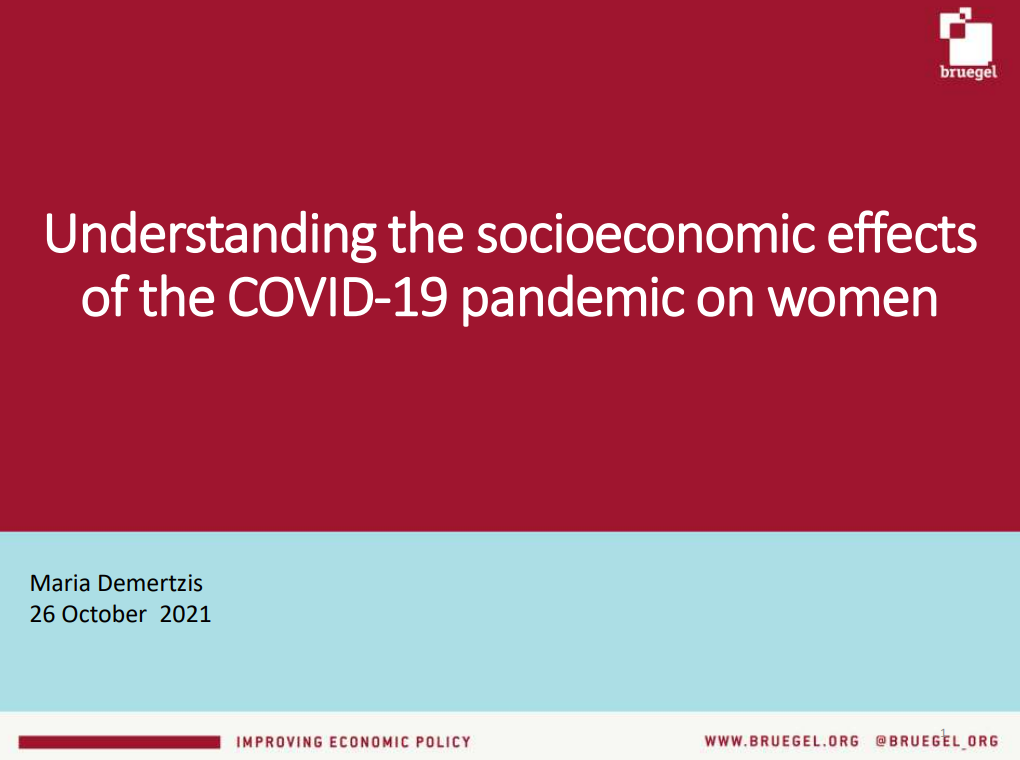Blog Post
Blogs review: Tackling youth unemployment
What’s at stake: The latest unemployment figures for the 15 to 24 years old age group have made big waves in the media and made European policymakers busy designing a series of packages ahead of the special Heads of State summit scheduled on June 27-28.
What’s at stake: The latest unemployment figures for the 15 to 24 years old age group have made big waves in the media and made European policymakers busy designing a series of packages ahead of the special Heads of State summit scheduled on June 27-28. Before reviewing the recent initiatives that will certainly serve as a basis for the policy announcements of the Heads of State summit, we discuss whether a youth unemployment rate of 50% mean that half the young population is unemployed and whether youth unemployment should be seen as a discrete problem deserving a special treatment.
What does a 50% youth unemployment rate mean?
Daniel Gros notes that a youth unemployment rate of 50% does not mean that half of the young population is unemployed. The youth-unemployment rate in Greece does not mean that close to two-thirds of young Greeks are unemployed. Only 9% of Greek teenagers are, for example, labor-market participants; two-thirds of that number cannot find a job. The unemployment ratio – the percentage of the unemployed in the reference population – among teenagers in Greece is thus less than 6%. Among those in the 20-24 age group [youth unemployment refers to those from 15 to 24 years old], the difference between the reported unemployment rate and the percentage of youth without a job and looking for one is less stark. But, even among this age group, one finds that the unemployment ratio is often about one-half of the widely reported unemployment rate.
Johannes Schweighofer writes that taking a broader picture into account, i.e. NEET rates, employment rates, unemployment ratios and unemployment rates, it would be fair to say: the labor market situation for young people is particularly favorable in the Netherlands, Austria, Denmark and Germany, according to an unweighted average of these indicators. But if labor market conditions for young people are defined relative to the overall labor market situation in a country to highlight the situation of 15-24 years old persons, Austria moves somewhat closer to the EU27 average. Seen from this perspective, the situation for young people is particularly bad in Sweden, Luxemburg, and Italy; this comes somewhat as a surprise.
Derek Tompson writes in The Atlantic that lurking under the rise of youth unemployment among the richest countries is an even scarier trend – the rise of long-term youth unemployment. About half of Europe’s unemployed youth have been out of work for more than six months, according to 2011 data.
Is youth unemployment a discrete problem?
Daniel Gros writes that there are several reasons to doubt that youth unemployment is a discrete problem meriting special treatment. In those countries where the problem makes the biggest headlines, youth unemployment accounts for less than a quarter of overall unemployment. By contrast, youth unemployment contributes relatively much more (about 40%) to overall unemployment in countries like Sweden and the UK. One could argue that the latter two should worry about their youth unemployment more than Spain or Greece should. The fact that youth unemployment is just a part of a larger problem leads to the real policy question: Why should officials spend limited time, energy, and public funding specifically on unemployed young people, rather than on all of the unemployed? Europe has a general macroeconomic problem, owing to demand factors that interact with a rigid labor market, rather than a specific youth-unemployment problem. This implies that there is no need for ad hoc measures for young people, which merely risk overloading welfare systems with even more exemptions and special rules.
Paul Krugman writes that you hear talk about a “new normal” of much higher unemployment, but all the reasons given for this alleged new normal, such as the supposed mismatch between workers’ skills and the demands of the modern economy, fall apart when subjected to careful scrutiny. If Washington would reverse its destructive budget cuts, if the Fed would show the “Rooseveltian resolve” (see our previous issue on the economics of a regime change) that Ben Bernanke demanded of Japanese officials back when he was an independent economist, we would quickly discover that there’s nothing normal or necessary about mass long-term unemployment.
Types of policies and policy principles
In its report Global Employment Trends for Youth 2013, the ILO discusses five key policy areas to promote decent work for youth:
- Employment and economic policies to increase aggregate demand and improve access to finance;
- Education and training to ease the school-to-work transition and to prevent labor market mismatches;
- Labor market policies to target employment of disadvantaged youth;
- Entrepreneurship and self-employment to assist potential young entrepreneurs;
- Labor rights that are based on international labor standards to ensure that young people receive equal treatment.
In a recent policy brief, the Kiel Institute argue that any employment policies targeted at youth need to take possible crowding-out effects for other age groups into account. IDEA runs the typical pros and cons about whether youth unemployment merits a special treatment.
A short guide to recent initiatives
EU leaders will certainly based their actions on a number of ongoing initiatives:
- The Youth Employment Initiative (2013) proposed at the EU Council of Ministers’ meeting in February, which aims to reinforce and accelerate measures that were recommended in a Youth Employment Package (2012) in December
- Youth Employment Package (2012), which is the follow-up to the actions on youth laid out in the wider Employment Package. The YU package includes:
a. A proposal for a Council Recommendation to introduce a Youth Guarantee (The Youth Guarantee Recommendation was adopted by the EU’s Council of Ministers on 22 April 2013. The Youth Guarantee, based on experience in Austria and Finland, seeks to ensure that all young people up to age 25 receive a quality offer of a job, continued education, an apprenticeship or a traineeship within four months of leaving formal education or becoming unemployed
b. A Quality Framework for Traineeships
c. A European Alliance for Apprenticeships
- Youth on the Move, which is a comprehensive package of policy initiatives on education and employment for young people in Europe
- EU Skills Panorama, which is an EU-wide tool gathering information on skills needs, forecasting and developments in the labor market
For a more detailed presentation of these ongoing initiatives, we recommend BrusselsDiplomatic.
Specific proposals on mobility
In a recent speech, Androulla Vassiliou – Commissioner for Education, Culture, Multilingualism and Youth – argued that in spite of high unemployment, the number of job vacancies in EU is increasing. This paradox reveals a mismatch between the skills provided and the needs of the world of work, and so the failure of our education systems to a certain extent. The EU Skills Panorama points that vacancies are hard to fill in the health, ICT, engineering, sales and finance sectors, the new European Vacancy and Recruitment Report says.
Androulla Vassiliou also outlined that the feature of the European Commission proposal Erasmus for All programme, which is now under discussion by the Council and aims at increasing mobility within the EU. About twice as many people as now could get the chance to study or train abroad with a grant from Erasmus for All. Among them would be nearly 3 million higher education and vocational students. Full-time Masters’ students would also benefit from a new loan guarantee scheme set up with the European Investment Bank Group.
Specific proposals on training
Bob Hancké writes that there is one country in Europe where, for highly idiosyncratic reasons, an emphasis on training might be relevant: Spain. Over the last 15 years (i.e. more than half of a generation) many young people forewent higher education in favor of higher wages in relatively low-skilled sectors such as construction and tourism. The country is the only one, in fact, where the number of people graduating from universities has fallen over the last 20 years.
Timothy Taylor notes that Germany and Switzerland educate roughly 53 percent and 66 percent of students, respectively, in a system that combines apprenticeships with classroom education — the dual system. This approach brings young people into the labor force more quickly and easily. The United States is an outlier: By international standards and official definitions, it has virtually no vocational education and training program.
Specific proposals on labor market segmentation
In a recent CESifo report, Giuseppe Bertola, John Driffill, Harold James, Hans-Werner Sinn, Jan-Egbert Sturm and Ákos Valentinyi write that the two tier labor markets that have emerged in Spain, Portugal, Greece, and to some degree Italy, have thrown the burden of job cuts onto a particular segment of the labor market, those individuals on temporary contracts. Meanwhile, the heavily protected workers in regular jobs feel little pressure from the existence of many unemployed persons to moderate wage claims or change working practices to increase productivity.
Republishing and referencing
Bruegel considers itself a public good and takes no institutional standpoint. Anyone is free to republish and/or quote this post without prior consent. Please provide a full reference, clearly stating Bruegel and the relevant author as the source, and include a prominent hyperlink to the original post.














